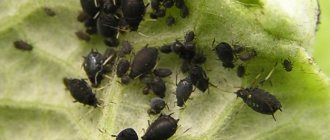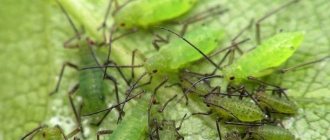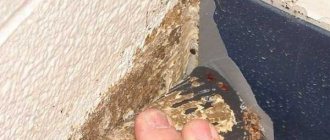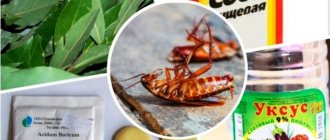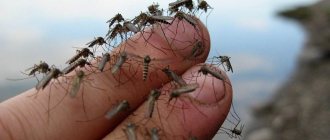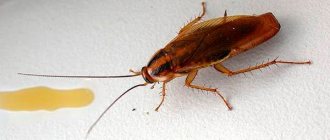The melon aphid often annoys gardeners. It affects cucumbers, pumpkins and zucchini in greenhouses and open ground, inhibits their growth and significantly reduces yield. It is important to begin combating aphids immediately after detection, as well as timely prevent the appearance of the pest. Methods for effectively getting rid of aphids on cucumbers in a greenhouse are described in this article.
How to fight aphids on cucumbers in a greenhouse
Why I chose these methods for controlling aphids in the greenhouse
Aphids only seem like small and harmless insects. For us gardeners, this is a serious enemy, a difficult to exterminate phytophage that destroys cultivated plantings. Aphids feed on the cell juices of greenhouse cucumbers - a small colony of pests can dry out and destroy one bush in about a week.
This is a separate superfamily of the order Hemiptera. Within it there are 10 more families, uniting about 4 thousand varieties of aphids. Despite this diversity, the insects are very similar to each other: 1.5-7 mm in length, translucent, pale yellow or pale green. Includes both wingless and winged individuals.
The life cycle of insects begins in early spring and ends in late autumn. All this time, voracious phytophages feed on the nutritious cell sap of plants.
The following types of aphids are dangerous for greenhouse cucumbers:
- Greenhouse. They feed on all garden vegetation.
- Melons. They prefer cucumbers, zucchini, and melons.
- Potato. They feed on nightshades, but in their absence they switch to cucumbers and greens.
In order to prevent the appearance of voracious aphids on my site, I turn to prevention. I consider agrotechnical methods to be a sufficient means of counteraction - I plant “repellent” plants in greenhouses that are unloved by these phytophages, strengthen the immunity of weak bushes, and attract natural enemies of aphids to greenhouses.
If such preventive measures are not enough, I turn to proven and safe folk “recipes”. When the pest invasion is large-scale, I buy chemicals and fight not only aphids, but also their carriers – ants.
ants in the garden
Agrotechnical methods of combating aphids in a greenhouse
By sucking out cell sap, aphids weaken the plant and undermine its immunity. This inhibits cucumber growth, promotes the development of diseases, and leads to the death of the bush. There is also a danger in the spread of phytopathogenic fungi and viruses. The products of its vital activity clog the stomata of leaf blades, which makes it difficult for plants to breathe and inhibits the processes of photosynthesis. Turning to simple agrotechnical pest control will help prevent all these negative consequences.
Attracting biological enemies
Aphids have a lot of natural enemies:
- earwigs;
- ladybugs;
- predatory wasps;
- lacewings;
- hover flies.
Ladybugs are especially active in eating aphids. Carefully collect insects throughout the garden, transfer them to the greenhouse closer to the leaves and shoots affected by aphids.
During a fine day, keep the doors and windows of the greenhouse open so that the “eaters” of aphids can get in there themselves. Flying insects are attracted by the smell of fennel, coriander and dill. For earwigs that are afraid of light, you can build houses from sawdust sprinkled with water.
enemies aphids ladybugs
Planting bait plants
Use a trick - plant plants in the greenhouse whose taste will appeal to aphids more than cucumbers:
- legumes;
- dill;
- sow
You can plant younger cucumber bushes that are specifically intended to be eaten. Regularly inspect baits for pests. As soon as a large number of aphids accumulate on the plant, carefully pull it out by the roots and destroy it.
Planting repellent plants
Aphids do not like many common garden flowers and herbs:
- mustard;
- marigold;
- basil;
- cilantro;
- mint.
“Repellers” can be planted around the perimeter of the greenhouse and between the cucumber beds. They will protect the plantings not only from aphids, but also from other uninvited guests. Ants do not like mint, and marigolds and basil do not like mole crickets and nematodes.
Strengthening plant immunity
An indirect way to counteract aphids is to adhere to the feeding schedule and apply the necessary fertilizers. This increases the resistance (immunity) of cucumbers to pests and pathogens, and accelerates the regeneration (restoration) of damaged tissues.
I advise you to pay attention to the following points:
- An excess of nitrogen fertilizing is a risk factor for aphid invasion. The abundance of young and juicy soft green mass attracts the pest.
- Potassium-phosphorus fertilizers stimulate leaf coarsening and the accumulation of active substances that increase the osmotic pressure of cell juices. These factors make the plantings unattractive and inedible for phytophages.
For these purposes, I recommend fertilizing the greenhouse soil with dry potassium and phosphate compounds during the autumn preparation of the greenhouse. During the summer season, periodically spray the above-ground part of the cucumber bush with the following composition: 1 tbsp. a spoonful of superphosphate in granules, 1 teaspoon of potassium chloride per 1 bucket of water.
Proper watering is also important for plants - only with heated water. At the first stages of development, cucumbers are watered with infusions of weak concentration: tomato, nettle. Air humidity in the greenhouse is maintained at 75-80%.
Temperature conditions are required: during the day – 25-30 C, at night – 15-18 C. Sudden changes reduce the immunity of plants and make them susceptible to pests.
Folk remedies
Most often, individuals become active in July. At this time, cucumbers enter the stage of active fruiting, when the lashes of seedlings are densely strewn with flowers, ovaries and filling greens.
If no measures are taken, then most of the vegetative mass of the bushes dries out, the ovaries fall off, the plant ages and dies. Pests are sensitive to the effects of various insecticides.
Modern treatment of beds with synthetic and biological solutions makes it possible to control the massive spread of aphids.
Since an environmentally friendly harvest of gherkins and the use of pesticides at the fruiting stage are incompatible, it is worth turning to traditional methods of controlling aphids on your site.
Traditional methods of controlling aphids in a greenhouse
The appearance of a voracious phytophage in a cucumber greenhouse is signaled by the following:
- The appearance on the leaves and stems of numerous “pimples” - light green translucent pests.
- Deformed tops of bushes.
- Sticky, whitish spots on leaves.
- Twisted shoots.
- Ants scurrying around the greenhouse and cucumbers.
Aphids reproduce quickly - conduct a thorough inspection of the plantings at least once a week. Don’t hesitate when these signs appear - at first, aphids can be easily dealt with using safe folk remedies.
Spraying against aphids with plant infusions
The following herbal infusions are effective:
- Peppery. Finely rub and chop 1 kg of hot pepper. Pour the mixture into 3 liters of water and cook it over low heat for 1 hour. Place the pot with the broth in a warm place for 2 days. Then strain and use for spraying and irrigation. ½ cup of concentrated mixture per 5 liters of water is enough. If you have any excess solution left, pour it into dark glass jars or bottles and store it in the refrigerator.
- Garlic-dandelion. Collect 0.5 kg of dandelions and remove the flowers from them. Finely chop the green mass along with the roots, grate 3 medium garlic heads. Tip the mixture into a bucket, add warm water, and mix thoroughly. After 2 hours, strain and use the solution to spray the affected bushes.
- Onion. Add ½ bucket of onion peel to the rim with water. Cover with a lid and leave in direct sunlight. After a day, strain, dilute with water to a total volume of 10 liters. The solution is suitable both for spraying green mass and for watering the ground under cucumbers.
I recommend applying the treatment in the evening or in cloudy weather. Be sure to spray the leaf both from the outside and from the inside.
Treating cucumbers with soapy water
Let me introduce you to the well-known “old-fashioned” method of counteraction:
- Grate a block of tar or laundry soap until fine shavings.
- Heat a bucket of water to 60-70 C.
- Stir the prepared shavings into the liquid (until completely dissolved).
As soon as the solution has cooled, spray the affected plantings with it. Carefully process the leaves on both sides - aphids love the back parts - the “wrong side”.
Washing with water jet
If aphids only “taste” your cucumbers, try giving your plantings a “bath day.” Water the plants with a hose using a special spray nozzle. Thoroughly wash the affected leaves with jets of water from the front and back. Hold them with your fingers so they don’t break off from the pressure.
Powerful streams of water will wash weightless aphids to the ground. To prevent pests from having time to come to their senses, thoroughly pollinate the soil under the cucumbers with stove ash. Carry out “bath procedures” late in the evening, on a cloudy day, otherwise you will provoke sunburn of the leaves. Use warm water to avoid weakening a plant already affected by the pest.
What are aphids?
There are numerous types of aphids, but only two of them can be found on cucumbers:
- Melon aphid (Aphis gossypi) - insects can be dark or light.
- Peach aphids (Myzus persicae) are green or pale yellow insects.
Aphids, depending on the species, vary in size (from 2 to 5 mm); they are difficult to clearly see with the naked eye.
These pests have a round body ending in a pointed tail, which has two “tubes” on the sides. From these shoots, pests spread pheromones, using them to communicate within the colony. Did you know? On a plant infected with aphids, galls (growths) form, in which the pests take refuge from the weather. If such a growth is damaged, aphids have to repair it; for this, the insects secrete a sticky substance, as a result of which they significantly lose weight and die. Some more insects get stuck in the viscous liquid and close the hole with their bodies.
Aphids always appear in numerous colonies, located first on the tops of plants, then spreading along the leaves and stems. When the colony grows sufficiently, winged females appear in it, which, with the help of ants, are delivered to new plants, after which new colonies are formed.
During one warm season, several generations of aphids appear, each of which contains hundreds of individuals. Young aphids are similar to adults, but much smaller in size. These insects are especially dangerous for young plants.
Both types of aphids are very harmful to cucumbers, as they feed by sucking plant juices from them. For food they choose young, succulent shoots, leaves, inflorescences and flower buds. There are also varieties of aphids that feed on the juices of the root system.
Aphids cause weakening of the plant and complete inhibition of growth. Symptoms of aphid damage to cucumbers: shoots and leaves curl, turn yellow and gradually dry out. After the cucumber dies, the aphids move to other plants growing nearby.
The leaves and shoots of plants on which aphids feed are covered with droplets of their droppings, called honeydew. This secretion is sweet, sticky, and attracts ants. In exchange for sweet secretion, they protect and care for aphids.
Honey dew is also a nutrient for the development of fungal spores, which can be seen on the leaves in the form of black spots. Also, spores of pathogenic fungi often adhere to the sticky honey secretion, thus gray mold, which is a dangerous disease for plants, spreads on cucumbers.
Another threat to cucumbers is viral diseases carried by aphids from one plant to another.
Did you know? It is known that ants are breeders and herders of aphids, which are specially brought and planted on a plant “pasture”, after which they protect, create shelters and regularly collect the honeydew secreted by aphids.
Chemical methods
I advise taking such a drastic measure only if the greenhouse is completely infested with parasites. You will work with potent poisons that are also dangerous to the human body. Therefore, do not forget about closed clothes and shoes, glasses, a respirator, and rubber gloves. Proceed according to the instructions - exceeding the dosage does not always increase the effectiveness of the drug, but can lead to fatal consequences.
Treatment with herbal remedies
Herbal remedies are preparations made from natural raw materials. They contain plant poisons or viruses, fungal pathogens that parasitize the body of a certain type of insect, causing its death. They can cause serious poisoning or paralyze the nervous system of aphids. At the same time, herbal medicines are harmless to cucumbers, beneficial insects and humans.
Among the most popular and effective are:
- "Fitoverm": 4-6 ml per 1 liter of water. The evening hours are chosen for treatment: the affected stems and leaves on both sides are moistened with the composition. For a week after this, drip irrigation is prohibited so as not to wash off the product. It is enough to repeat the treatment with Fitoverm every 15 days.
- "Akarin": 6 ml per 1 liter of water. The plantings are sprayed with the product one day after watering. It is especially effective in hot weather. After a day, the next watering is already possible. To destroy an aphid colony, a single treatment with Akarin is sufficient.
- "Actofit": 8 ml per 1 liter of water. The leaves are sprayed with the preparation, then they are not wetted for 8-10 hours. 2 days after treatment you can harvest. To combat aphids, two sprays with Actofit per season are sufficient.
To increase the effectiveness of herbal remedies, experienced gardeners advise adding 1 teaspoon of soap solution to the prepared composition.
Spraying and treating soil with insecticides
The use of insecticides on cucumbers is not always justified - the plants have a short growing season. Slowly decomposing pesticides will not have time to completely dissolve by the time the greens ripen, which makes them unsafe to eat.
All effective insecticides can be divided into three categories:
- Organophosphorus compounds: “Aktellik”, “Nurel D”, “Dursban”. The harvest becomes safe after 14 days.
- Neonicotinoids: Bombardier, Vector, Confidor, Dantop, Tanrek, Mospilan, Ratibor. Zelentsy are harvested 3 weeks after processing.
- Pyrethroids: Arrivo, Decis, Kinmiks, Sherpa, Fury. Cucumbers become edible 2 weeks after spraying.
It makes sense to use potent synthetic compounds when the phytophage has infected more than 1/4 of your greenhouse plantings. Powerful drugs can destroy the pest within a few hours after treatment. But toxic components will remain in plants and fruits for a long time. Therefore, before using “chemistry”, always evaluate the consequences of insect control.
Fumigation with a sulfur bomb
A surefire way to resist an aphid invasion is to fumigate the greenhouse with a sulfur bomb. Popular varieties: “Hephaestus”, “FAS”, “Pawn”, “Climate”. The method is good for use after harvesting - the aphids go to winter, but will wake up in the spring to feast on new young shoots.
The smoke emitted (containing nicotine) is harmful to insect pests. But together with them, it kills beneficial soil bacteria and promotes corrosion of metal structures of the greenhouse.
Preventive measures
There are a number of recommendations to prevent the appearance of aphids:
- The most important thing is to fight ants with all available means. Among insecticides, it is recommended to use “Aardvark”, “Thunder”, “Absolute”. Boric acid powder is effective. Irreparable damage is caused to anthills by spilling boiling water on them.
- Carefully remove all plant debris from the greenhouse: eggs and larvae of the pest remain on the weeds and tops.
- Do not plant more than 4 cucumber bushes per 1 m2: aphids spread faster in dense plantings.
- Inspect the plants weekly: the sooner you detect pests, the more successful the fight will be.
- Plant plants that repel aphids in the rows: garlic, marigolds, basil, peppermint, cilantro.
- For open plantings: attract aphid-eating birds to the area. To attract sparrows, tits, and linnets, hang feeders around your garden plot.
We should also talk about the disinfection of greenhouses and greenhouses.
Greenhouse disinfection
Disinfection of greenhouses significantly reduces the risk of pests and diseases appearing next season. Disinfection work is carried out every year after harvesting and cleaning the premises. The air temperature should not be lower than +8…+10 ºС. Disinfection can be gas or wet.
Gas is used in sealed rooms : fumigated with sulfur at the rate of 50 g per 1 m3 of room. Trays with sulfur bombs are placed in different places and set on fire. The doors are closed tightly and left for 3 days. Then the greenhouse is well ventilated.
Wet disinfection is more accessible - copious spraying of all surfaces and structures with antiseptics. For processing use:
- bleach solution - 400 g of the substance is infused for at least 3 hours in 10 liters of water;
- formaldehyde solution - 250 g dissolved in 10 liters of water.
Prevention of aphids on cucumbers in a greenhouse
In order not to be left without a significant part of the harvest, I use universal recommendations:
- I choose unpretentious hybrids for planting, varieties that are resistant to pest invasion.
- I disinfect cucumber seeds before sowing and only propagate my own seedlings. If I have to purchase seedlings, I carefully inspect them and place them in quarantine for several days.
- I maintain a comfortable temperature and humidity for cucumbers.
- I weed the greenhouse in a timely manner - aphids and ants feel more comfortable in thickets than in open areas.
Experienced gardeners do not recommend planting mallows, chrysanthemums, nasturtiums, sunflowers and poppies near greenhouses - these plants are a favorite delicacy of aphids.
Answers to popular questions
How to understand that a plant is affected by aphids?
The cucumber bush on which aphids have appeared fades and gets sick. The plant is covered with sticky honeydew, and small bugs can be seen on the back of the leaves.
What remedies are most effective against aphids – folk or chemical?
Products with a chemical composition act instantly, which means they help get rid of it faster. But they are more harmful compared to traditional and biological drugs. It is necessary to select a control method based on the degree of damage to cucumbers
Are there ways to get rid of aphids when cucumbers produce crops?
Folk remedies are used even when there are fruits on the cucumber bushes. After using biological preparations, you must wait 5 days before harvesting cucumbers.
Is it possible to prevent aphids from appearing in the garden?
If you start prevention in time, the risk of aphid penetration will be minimal.
Greenhouse disinfection
To prevent aphids from settling in a cucumber greenhouse, it is enough to turn to simple methods of disinfecting the space:
- Throughout the season (from planting cucumbers until the second half of July). Three (with an interval of 20 days) treatments of cucumber plantings with Fitoverma solution are enough. Approximate consumption: 1 ampoule for 6 glasses of water.
- Late autumn, end of the season. Replacement of the top layer of greenhouse substrate, soil disinfection with bleach, Bordeaux mixture, karbofos.
greenhouse treatment
I will present the instructions for use:
- Karbofos: 30 g per 10 liters of water. Water the soil with the solution until it is moistened.
- Lime chloride. A thin layer of white powder is sprinkled on the surface of the ridge, after which the soil is dug up shallowly.
- Bordeaux mixture. First of all, prepare a solution of copper sulfate: 100 g of powder per 1 liter of hot water. Then dilute with 5 liters of cold water. In another container, 100 g of lime is slaked, then 5 liters of water are poured into it. Stirring constantly, the vitriol solution is poured into the lime solution. The mixture is used to treat the internal walls and surfaces of the greenhouse.
If the predecessors were affected by aphids, I recommend treating the greenhouse with a sulfur bomb at the end of the season.
How to treat the underside of leaves against melon aphids
The melon aphid is one of the most dangerous and voracious. Pests multiply quickly and live on leaves in entire colonies, destroying crops. In open ground they become active in the first half of July; in a greenhouse they feel great already in May.
Summer residents who adhere to the principles of organic farming use time-tested natural remedies based on garlic, onions, and wormwood to protect cucumber beds from parasites. They use: ash, soap, tobacco.
Here are the most popular recipes for folk remedies. These are biological insecticides, treatment with which protects cucumbers from pests.
Infusion of onion or garlic
Garlic and onions contain essential oils and phytoncides that repel aphids from plants. Smelling substances inhibit the vital activity of pests already present on plants.
100 g of onion or 70 g of garlic (you can use both hot vegetables at the same time, as well as their arrows, feathers and even husks) are crushed using a meat grinder or in a mortar, poured with a bucket of lukewarm water, and left for 24 hours under a lid at room temperature.
The strained infusion is generously sprayed onto the cucumber vines from a spray bottle, paying special attention to the ends of the shoots and the lower part of the leaf blades.
Infusion of celandine
Poisonous celandine, contains more than 20 alkaloids. These include:
- homochelidonin,
- chelerythrine,
- chelidonine,
- sanguinarine,
- protopin, etc.
Alkaloids and etherols are harmful to adult aphids and their larvae. All parts of the plant are suitable for infusion. You can use fresh greenery from bushes, with roots and flowers. Pre-dried plant materials are suitable, which completely retain components that are toxic to pests.
For every 10 liters of water, take 3-4 celandine bushes crushed with pruning shears or 100 g of dried leaves. The product is infused for 12-14 hours in a place inaccessible to pets, for example, in a bucket covered with a lid.
To enhance the effect, add 7 drops of pharmaceutical tincture of iodine (5%) or the same amount of brilliant green solution (ordinary brilliant green) to the filtered liquid, and then pour it into a garden sprayer.
Infusion of shag (tobacco) and ash
The leaves of tobacco, which belongs to the nightshade family, contain a pyridine alkaloid - nicotine. It has neurotoxic properties and effectively fights aphids. The alkali and mineral salt of the ash contain powerful insecticidal, disinfectant and antibacterial properties. In addition, they enrich plants with microelements.
How to prepare an insecticide that repels aphids, both in open beds and in greenhouses? Take 200 g of sifted ash and 300 g of dry tobacco leaves (tobacco dust is also suitable). Pour the mixture with a bucket of water, let it stand for 48 hours, strain through cheesecloth. Distribute the sediment evenly under the cucumber bushes.
By the way, a ready-made product containing tobacco dust and ash called “Tabazol” is available for sale. The main convenience of this mixture is that it can be used in dry form and there is no need to prepare an infusion.
It should be sprayed over the plantings. It is enough just to dust problem plants with the composition in dry and windless weather. The event is repeated every 7-10 days and after each rain.
To enhance the effect of using aqueous infusions of tobacco, onion or celandine, it is recommended to add tar, sulfur, and boric soap to them. Regular laundry soap is also suitable; add it at the rate of 40 g for every 10 liters.
Fighting ants
From my own experience, I can judge that the appearance of aphids in a greenhouse is the work of sweet-toothed ants. The waste product of aphids is a thick liquid, “honeydew.” It contains sugars, proteins, and is a favorite delicacy for ants. Over the years of evolution, pests have learned to “breed” and “milk” aphids. Special “shepherd” ants carry their “cows” into greenhouses.
Therefore, I find that an effective way to prevent aphids is to fight their patrons:
- I systematically loosen the soil in the greenhouse, thereby destroying ant passages.
- I plant “repellent” plants: parsley, wormwood, mint, basil, lemon balm.
- I dig up anthills. I collect the contents in a bucket and burn them.
- I fill the passages and paths with boiling water, ash, garlic or soda solution, kerosene, and cover them with bleach. Dry folk remedies are also effective: mustard, ground pepper, saltpeter, ash, lime.
- I use special anti-ant agents. Some of the most effective are “Grom-2”, “Mashenka”, “Aardeater”, “Absolute”. I scatter the drug granules in places where insects accumulate. The “treat” contains poison, the consumption of which kills insects.
Take action the first time ants appear on your site. If they manage to settle, multiply, it will become very difficult to remove pests “once and for all.”
Long-acting drugs
Before spraying cucumbers with similar products, you need to pick off all the fruits that have already set. Consumption of newly grown cucumbers is possible no earlier than a month after the use of chemicals:
- Aktara;
- Fury;
- Karate;
- Spark;
- Confidor.
Any of these drugs is an effective remedy for aphids on cucumbers, but it is better to use them in a large space in open ground. If there is a significant dominance of pests on cucumbers and tomatoes in a greenhouse, there are other powerful, but less dangerous methods of control.
Important!
During the fruiting period, long-acting aphid preparations should not be used.
Treatment of cucumbers against aphids in a greenhouse
You can prevent the appearance of voracious aphids on greenhouse cucumbers by preventative spraying with safe solutions according to folk recipes:
- Ash-soap solution. For a bucket (10 l) of water you will need: shavings of a bar of laundry soap, 2 tbsp. spoons of ash. The contents are stirred in the liquid until completely dissolved. The mass is used to irrigate leaves and shoots of cucumbers.
- Infusion of celandine. Collect the grass and dry it. Then fill 0.3 kg of dry mass with a bucket of water. Let it sit for a day, then use it to spray the green mass of cucumbers.
- Garlic infusion. Grind 0.5 kg of garlic cloves, pour 3 liters of water over them. Leave to infuse for 5 days. A safe product can be used from time to time to prevent the spread of aphids.
- Dandelion infusion. Grind 0.6 kg of green mass and 0.4 kg of the root part of the plant, pour 3 liters of water. It is enough to infuse the solution for 3 hours. They try to treat the green mass of the plant with the product. Infusions of wormwood, potato, tomato tops, garlic and hot pepper are prepared and used in a similar way.
A seemingly small and harmless aphid is a serious enemy of the gardener, which can ruin absolutely healthy plantings and leave them without a harvest. Therefore, timely prevention of the appearance of both the pest itself and its ant protectors, and resort to useful agrotechnical methods, is so important. If aphids have already appeared in the greenhouse, you can save the plant using proven traditional methods. An extreme method of pest control is the use of pesticides and sulfur bombs.
Signs of damage and why aphids are dangerous
Most often, aphids settle on the underside of leaves, so detecting them at the very beginning of infection can be quite problematic. There are signs that will help you suspect the appearance of these harmful insects in the garden:
- the appearance of sticky drops on the above-ground parts of the plant;
- loss of turgor in young leaves;
- change in the shape of the leaf plate, its curling and withering;
- falling of flowers and ovaries;
- the appearance of a large number of ants on cucumber plantings.
Attention! Late detection of an aphid colony on a crop leads to crop loss. By drinking the plant juice, the insect causes the stems and leaves to dry out, as well as the ovaries to fall off.
Effective measures
You can overcome aphid attacks using plant-safe but effective agricultural methods. Plant abundantly with herbal crops, which will become a bait for aphids. They will attract insects more than green spaces. Such plants include sow thistle, dill, and legumes. These baits must be systematically inspected every day. If aphids are found, they need to be pulled out along with the roots and burned away from the greenhouse.
Insects such as earwigs, hoverflies, ladybugs, and lacewings prey on aphids. It is recommended to attract them to the greenhouse. They can be collected in a box, brought to the greenhouse and released. To attract other predators that feed on aphids, plant dill, coriander, and fennel near the cucumbers. Pour sawdust onto the earwigs and moisten them generously.
Around the greenhouse you can densely plant basil, marigolds, mint, and mustard. These aromatic crops will repel parasites. These plants can also be planted between rows of cucumbers.
Prevention
To prevent aphids from appearing on cucumbers in a greenhouse, they need to be properly cared for. For this purpose, agrotechnical measures are carried out:
- Water with warm water (at least 22°C). If the air temperature becomes lower, the number of waterings also needs to be reduced.
- Treat the seeds with a manganese solution. The grains are kept in it for 15-20 minutes, no more.
- Treat the soil with caustic soda or bleach. You can use a sulfur bomb to repel parasites.
- Once a week, carefully inspect each plant: this way you can quickly see aphids at the initial stage.
- Provide natural ventilation inside the greenhouse.
- Fertilize the soil regularly.
If aphids are identified at an early stage, the problem can be quickly eliminated. The main thing is to stop the reproduction process.
